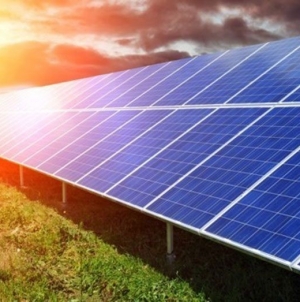IDB tempers Guyana’s projected growth in 2020 from 86% to 39%
The Inter-American Development Bank (IDB) has posited that Guyana will experience economic growth of 39 percent in 2020.
That figure stands starkly in contrast to the 86 percent projection by the International Monetary Fund (IMF) in September. The IMF report had caused much excitement when reported by some sections of the media.
The IDB’s recent projection brought to light in its Caribbean Region Quarterly Bulletin for the last quarter of 2019, does not dispute the IMF’s projection. It rather provides a more accurate indication of just how much wealth will stay with Guyana.
The IMF’s 86 percent projection is a growth in Gross Domestic Product (GDP), while the IDB’s projection is a growth of Gross National Income (GNI).
The GDP takes into account the value of all the goods and services produced within a country’s borders. In 2020, oil production in the Stabroek Block by ExxonMobil and its partners, Hess and CNOOC Nexen, will form the majority of Guyana’s growth in GDP.
Particularly noteworthy is that in a report on its Article IV consultation last year, the IMF stated categorically that the direct impact on the economy of an 86% growth in GDP will be “mostly” offset by higher imports of oil extraction equipment and payments to the operators.
It is for this reason that when modeling the economics of countries hosting large foreign companies, the GNI exists. This indicator considers the total value going to a nation’s people and businesses.
In its report, the IDB states, “The GNI adjusts GDP for net labor/investment income.”
The GNI considers the GDP minus the investment income outflows i.e. the value that will leave the country with foreign companies.
These investment income outflows are useful to approximate Guyana’s GNI, the Bank warns.
It posited that “… by subtracting net labour/investment outflows from GDP, economic growth is tempered to 39 percent in 2020.”
While the IMF report had noted that most of the wealth accrued from production on the Stabroek Block’s Liza-1 and Liza-2 projects will not impact the domestic economy, it hadn’t yet provided an alternative projection to the GDP that would denote the value the country gets to keep.
Attached are two charts which demonstrate the IMF’s message. It makes projections not just to 2020’s end, but for the next 28 years.
The first chart shows revenues making a slow increase to 2024, and a short drop in 2025. After this, the revenues will experience a steep increase until 2027, after which it will be generally buoyant for a number of years.
The second chart shows the total value of the reserves assessed by the IMF on its mission. It should be noted that the assessment included only Liza Phase 1 and 2. The gross total oil revenue, as a percentage of Guyana’s 2018 GDP, is calculated to be 1,178 percent. Of that, 1,007 percent is projected to go to the private oil companies, 171 percent is projected to go to the Natural Resource Fund, and 114 percent is projected to be transferred from the Fund to the budget. That means a total of 86 percent of the total value of the reserves will go to the oil companies, while Guyana will get 14 percent.
In November, Opposition Leader, Bharrat Jagdeo, drew attention to an article by Bloomberg which touted the 86 percent projected GDP growth, and asked the question “Does it mean it’s all great news for Guyana?”
The former President said, “A lot of people, they’re talking up the numbers [about] the growth in economy without talking up what will come to us … in the treasury.”
He shared his view that the conversation about Guyana’s growth should focus more on what goes directly to the people.






















